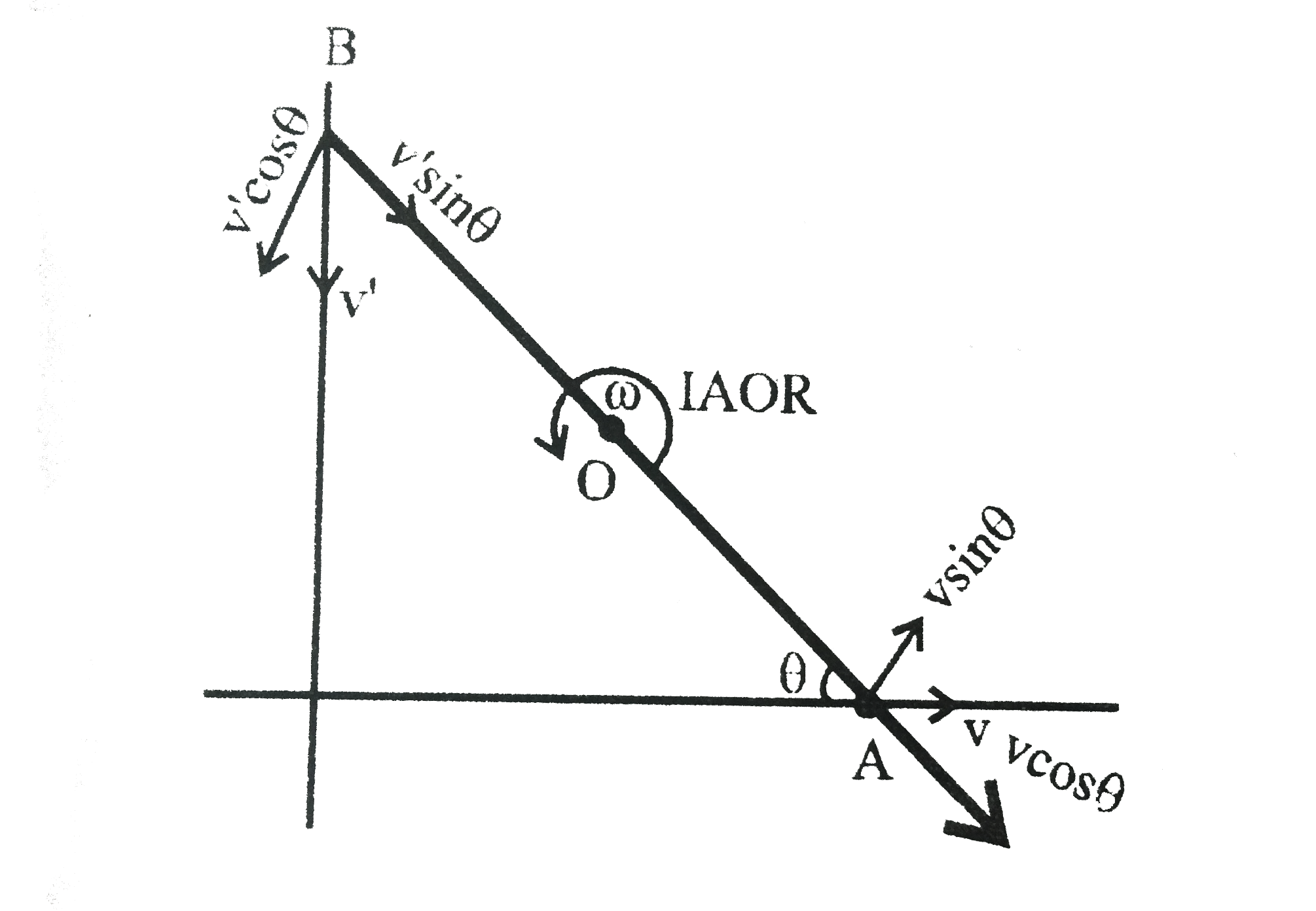In the previous question, if dv/dt=0, then the angular acceleration of the ladder when α=45∘ is.
A
2V2L2
B
v2/2L2
C
√2[v2/L2]
D
None
Text Solution
The correct Answer is:A

v'sinθ=vcosθ….(1)
let instantaneous axis of rotation is at distance l from end A.
ω=vsinθl=v'cosθ(L−l) ....(2)
from (1) & (2) ω=vsinθl=vcos2θsinθ(L−l)
l=Lsin2θ... (3)
from (2) & (3)
ω=vcosecθL
dωdt=vL(−cosecθ.cotθ)×dθdt
dωdt=vL(−cosecθ.cotθ)×vLcosecθ
α=−v2L2cosec2θ.cotθ
α=−v2L2cosec245∘.cot45∘⇒α=−2v2L2.
|
Similar Questions
Knowledge Check
In previous question, if μ=0.3 the acceleration of the block will be:
AzeroBg10↑⏐ ⏐⏐Cg4⏐⏐ ⏐↓Dg5⏐⏐ ⏐↓In previous question, if the force applied on the body is 20N , the acceleration of the body will be.
A10ms−2B6ms−2C5ms−2D8.75ms−2For the previous question, the acceleration of the particle at any time t is :
A−0.8m/s2B0.8m/s2C−0.6m/s2D0.5m/s2
For the previous question, the acceleration of the particle at any time t is :
View SolutionIf the magnitude of velocity in the previous question is decreasing with time, what is the direction of f angular acceleration (→α)?
View SolutionRelation between Torque and Angular Acceleration || Ladder Problem
View SolutionFor the previous question, the acceleration of the particle at any time t is :
View SolutionIf the magnitude of velocity in the previous question is decreasing with time, what is the direction of f angular acceleration (→α)?
View Solution
